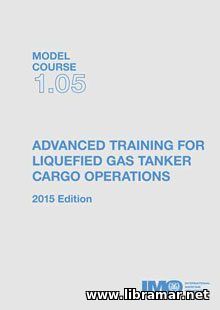 The present IMO Model Course 1.05 was developed specifically for the crew members of the liquefied gas tankers, from Master and chief officers to actually anyone responsible for the loading and discharging of the cargo, its handling and care whilst in transit, including cleaning of the cargo tanks and all other activities related to this.
The trainees who have successfully completed this program, will be considered fulfilling the mandatory training requirements as outlined in the STCW Convention, Reg. V/1-2 para 3. The coverage of this training course is impressive and includes the safety of the liquid gas tankers, fire prevention and fire extinction arrangements on board, control and prevention of the pollution of marine environment from the ships, and of course all established operational procedures and practices together with the applicable regulatory framework.
In fact it covers literally all training requirements. In addition to that, the training program also covers the important aspects of management on board, particularly risk assessment plus proper safety management and contingency planning in compliance with the relevant provisions of the International Safety Management Code.
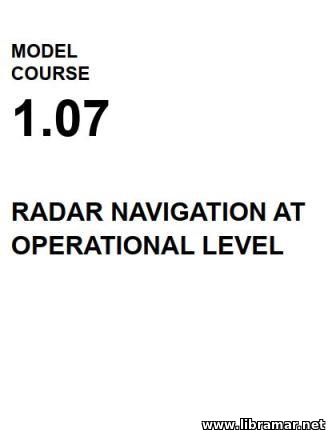 This Model Course No. 1.07 consists of seven major learning topics. The first topic is the essential theory of the commonly used marine radar systems and gives the basic theoretical knowledge of the systems, which is obviously necessary for all radar operators. The second topic addresses the main operational skills of the systems, while the third one is dealing with the radar navigation and ship position fixing.
The manual plotting skills are dealt with in the fourth section, and the fifth section will cover the functions of the auto target tracking as well as the targets tracked by means of the AIS. The two last topics included in the course are devoted to the operational skills and, finally, the adherence to the provisions of the COLREG when the marine radar systems are used.
All trainees who manage to complete all sections of the present course and meet the applicable performance standards will be able to properly recognize when the marine radar systems shall be used and also perform correct selection of the modes and range settings. They will also get the understanding of the control settings for the best system performance and necessary awareness of the equipment limitations.
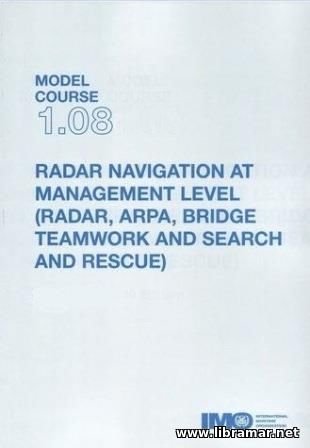 The ultimate aim of the present IMO Model Course 1.08 is to provide trainees with the knowledge and information required to meet the minimum established standards related to the seafarers competence in maintaining the safe navigation using the info obtained from the maritime navigation equipment installed on board as well as the systems intended to assist.
The content of the training course will give trainees the information on the proper use of the shipboard radar, AIS and ARPA/TT; they will also get to know more about the bridge teamwork and SAR operations. Note that the present course takes account of the other two courses, namely nos. 1.07 and 7.03, and we recommend that you check both of them for better training results.
The course also features the coverage of the analysis and application of the radar resources for the better management of decision making, paying due attention to the safety of navigation and effective SAR operations. The trainees who have successfully completed all parts of this course will be considered familiar and knowledgeable about all aspects of the radar navigation at management level, including the operation and use of all associated equipment.
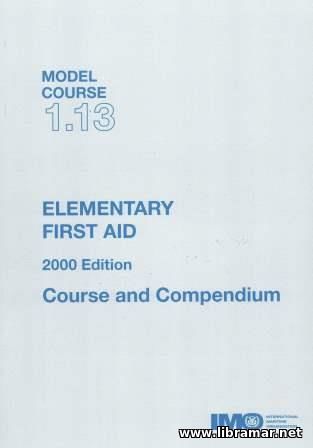 The paragraph 2 of Section A-VI/2 of the STCW convention requires that all seafarers who are engaged or employed on board any vessel shall have successfully completed the basic training course in the elementary first aid before they can be assigned to their duties on board. This training shall be a part of any seafarer’s mandatory pre-sea course.
The course is intended to provide them with some essential preparedness for any hazardous and emergency situations they can face on their ship. The content of the training will enable them to take proper and timely action during the accident as well as medical emergency while they are waiting for the duly trained and professional person to arrive.
The main objective of the training is to get the trainees better familiarized with the accidents and injuries that commonly take place on board vessels together with the correct actions and established procedures to be applied in any particular situation. The trainees shall be able to conduct the proper assessment of the needs in any of the above stated situations. In addition to that, the training covers the essential instructions in personal hygiene and other important aspects and tips of healthy living.
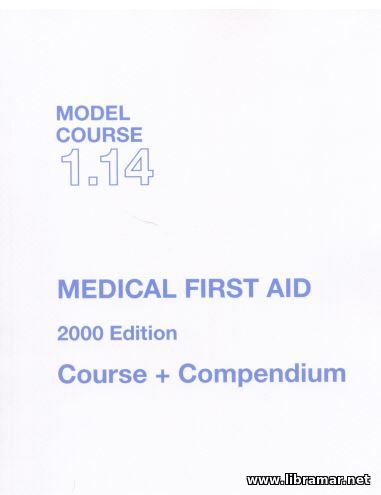 The present IMO Model Course has been developed for the candidates who will be providing medical first aid on board vessels and shall get prior training as per the relevant provisions of the STCW Code. The syllabus of the training course is covering all applicable requirements of the convention. The people who min the minimum competency standards will be considered competent and will be authorized to provide medical first aid should any illness or accidents take place on board.
The trainees taking subject course are expected to complete the Model Course 1.13 – Elementary First Aid which would provide the necessary essentials. The trainees will start with the information on the immediate action and the first-aid kits kept on board ships. After that the content of the course covers the structure and function of the human body, and various toxicological hazards commonly existing on board vessels. The examination of the patients has been addressed within a separate chapter.
Then, the different problems have been covered including but not limited to the spinal injuries, muscular injuries, heat and cold effects, scalds, burns, fractures and many others. Also, useful information on the pharmacology and sterilization has been included. Note that the volume also covers the cardiac, psychiatric and psychological issues.
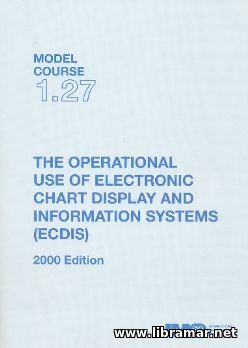 The ECDIS systems that are in common use today offer so many practical benefits if you compare this to the “old school”, i.e. conventional means of marine navigation. That is why the introduction of these systems is deservedly considered a great step forward on the way to the safer ship navigation. Now they are replacing the regular paper printed navigation charts on many vessels and this process is ongoing.
The subject systems are getting able to provide navigators with the commonly used functions and the developers keep adding new functions. The ECDIS are quire complex and technically sophisticated systems including numerous components such as the specific software, sensors, hardware, data etc. The navigators shall pay due attention to the working principles and arrangement of the system in order to avoid any malfunctioning that could lead to serious consequences.
That is the main reason for developing the present IMO Model Course which is intended to provide trainees with all information they need to know when operating the systems to make sure they will navigate with no danger to their own ship and to the other ships and marine environment. Have a good look in the content of this course and you will definitely improve your knowledge of ECDIS-aided navigation.
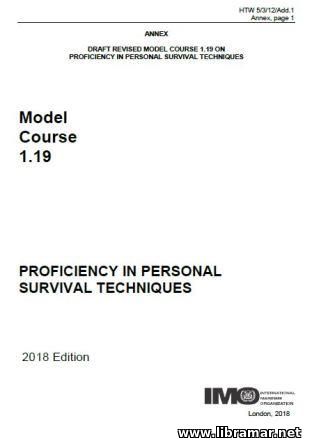 The main objective of the IMO Model Course 1.19 is to meet the minimum competence standards applicable to the seafarers with respect to the shipboard safety familiarization as well as the basic training in the personal survival techniques, in accordance with the relevant sections of the STCW Convention.
The aim is to provide them with the proper guidance and necessary information to reach the KUP, standing for the knowledge, understanding and proficiency, so that the can demonstrate the due competence in the subject techniques. Those who have successfully completed all parts of the course will be considered as having sufficient skills and knowledge for performing the survival duties.
They will be expected to show the ability to don the lifejackets and immersion suits, operate the survival craft together with all equipment installed on board, and to be proficient in the usage of the location devices, such as the radio equipment. In addition, they should be able to take all necessary actions when boarding the survival craft in order to increase the chances of survival. Recommended to every single seafarer sailing on any vessel and willing to be duly prepared to any sort of situation.
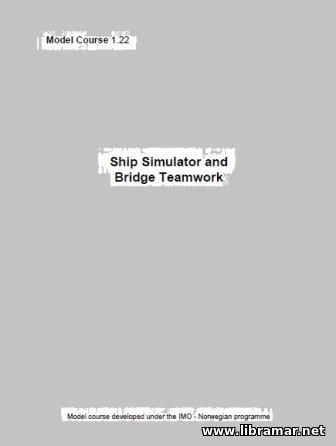 This IMO Model Course was developed to cover the main aspects of bridge teamwork and ship simulator, as it is implied by the title. The students who have completed the course will be considered as having sufficient experience in ship handling under different conditions. They will be able to effectively contribute to the bridge team work when the maneuvering of the ship takes place, including both normal and emergency cases.
They will be duly familiarized with the use of the shipboard diesel engines, and get better understanding of the different effects on ship, such as the shallow water effect, current and wind effects, narrow channels, bank effect etc. They will also develop the required awareness of the critical significance of the voyage planning and maneuvering and get themselves duly prepared in shipboard communication style and mental model of the passage.
In addition to that, the efficient ship bridge procedures and team work using the good ship handling and watchkeeping practices will be understood which will contribute to the safety of navigation. Note that the trainees are expected to possess some six month ship sailing experience before getting enrolled in the subject course.
|







